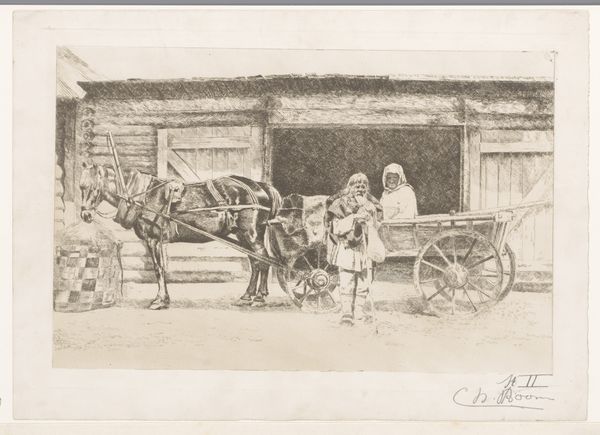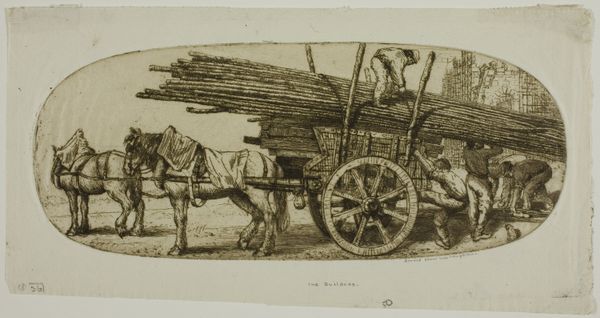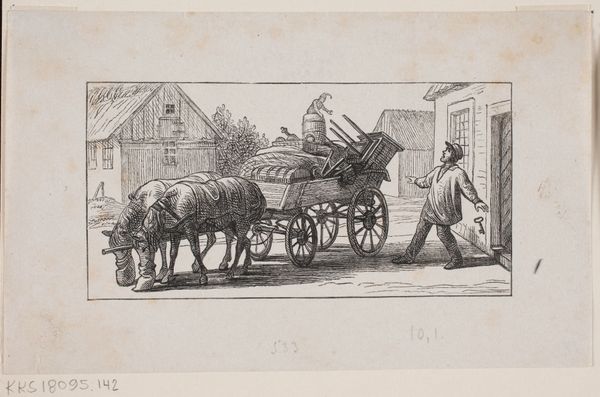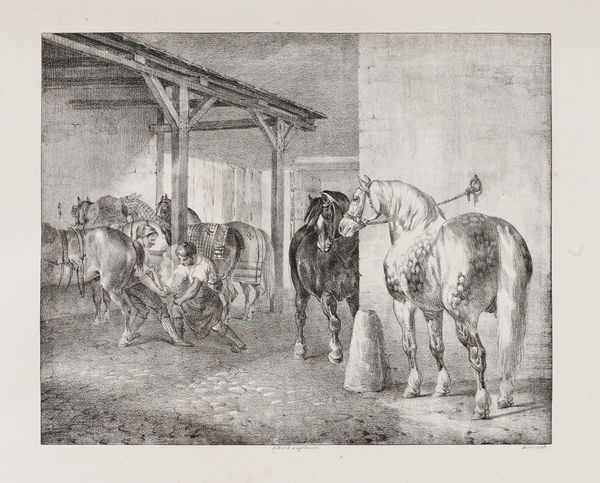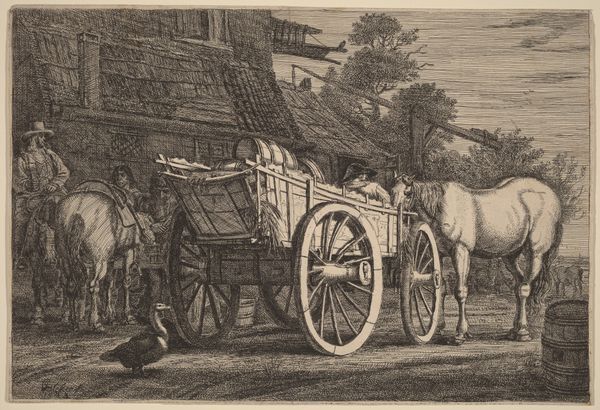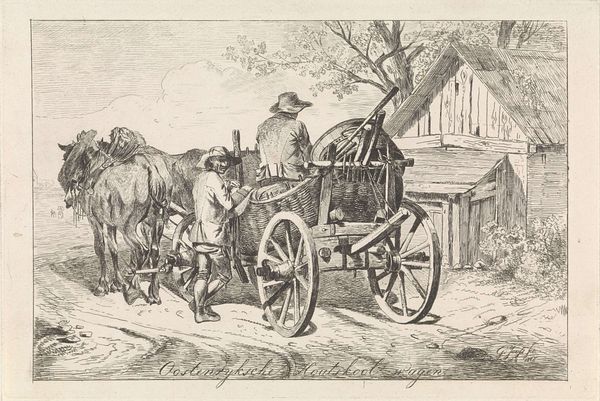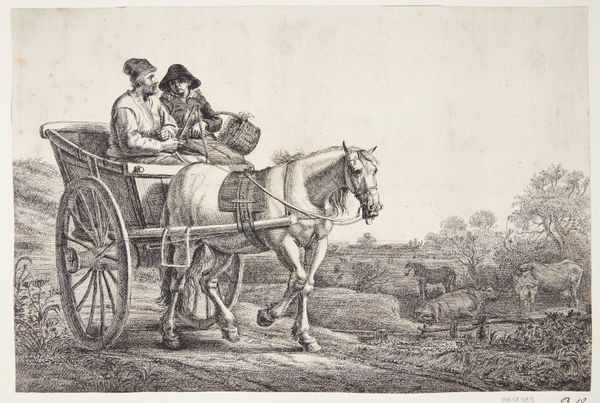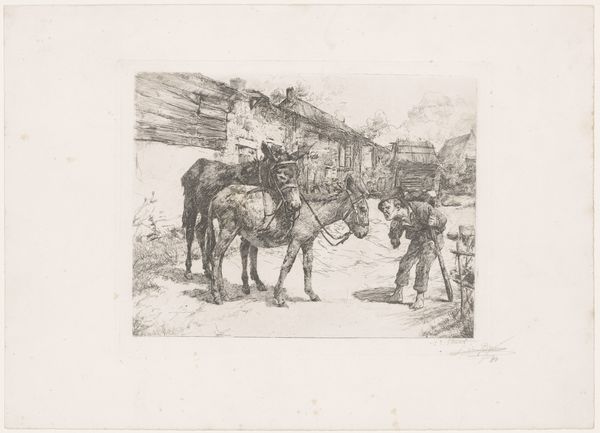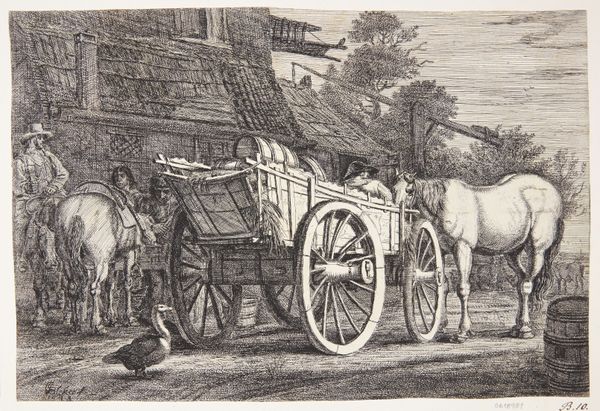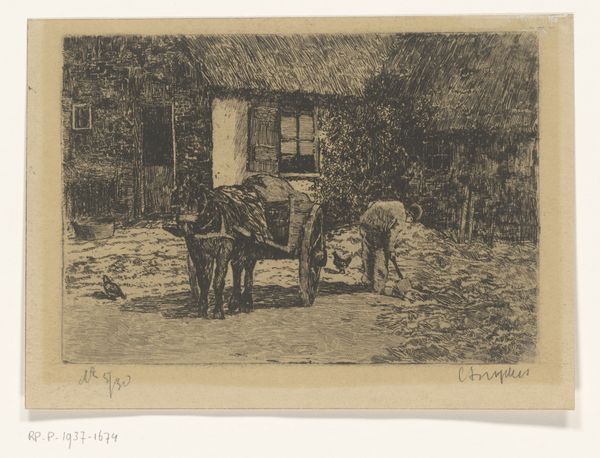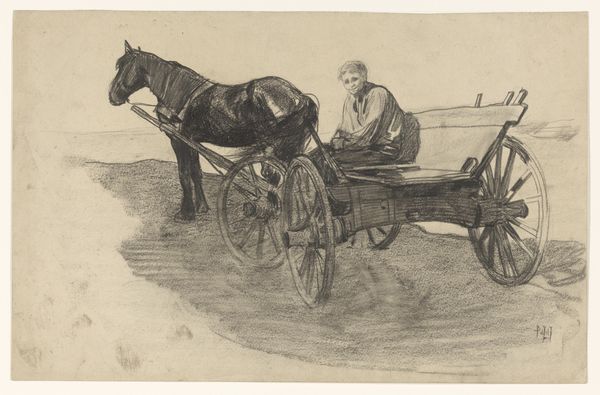
drawing, print, pencil, woodcut
#
portrait
#
drawing
# print
#
landscape
#
folk-art
#
pencil
#
woodcut
#
genre-painting
#
realism
Dimensions: height 241 mm, width 357 mm
Copyright: Rijks Museum: Open Domain
Editor: Charles Boom's "Man en vrouw met paard en wagen voor een schuur," dating from 1868 to 1909 and created with pencil and woodcut, offers an intriguing slice of rural life. I'm struck by its quiet solemnity, like a page torn from a forgotten storybook. What catches your eye in this piece? Curator: That solemnity is a keen observation. For me, the piece evokes the intimate dance between humanity and the land. Boom's delicate use of line – look closely, almost like whispers on the paper – really captures the textures of rural life. And consider the horse; isn’t it amazing how much character Boom captures? There is something innately beautiful about its simple reality. But also slightly heartbreaking, isn't it? Editor: Heartbreaking? How so? Curator: Well, the image to me seems filled with themes of mortality and labor. I always wonder what Boom wanted us to glean from their faces: contentment, fatigue, quiet resignation? How does their depiction affect you? Editor: That's a different reading than I initially had! It makes me see the figures not just as part of a landscape, but as individuals marked by their environment, if that makes sense. Maybe it's a romanticized view of peasant life. Curator: Possibly. Art is a playground of interpretations! But notice how their quiet presence dominates the scene – a quiet strength emanating despite what might be seen as hardship. Boom allows dignity and ordinariness to intertwine. So it’s about capturing those small beautiful moments that constitute lives lived, and that's more precious to me. Editor: I appreciate that; viewing this artwork now, through a perspective of labor and mortality adds new layers. Curator: Exactly. That’s why great art always seems to reinvent itself.
Comments
No comments
Be the first to comment and join the conversation on the ultimate creative platform.
